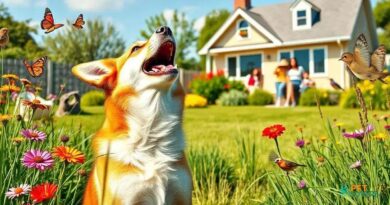What is animal enrichment
What is Animal Enrichment?
Animal enrichment refers to the various strategies and practices aimed at enhancing the quality of life for animals, particularly in captivity. This concept is rooted in the understanding that animals, including dogs, require mental stimulation, physical activity, and social interaction to thrive. By providing an enriched environment, pet owners and caretakers can help prevent behavioral issues and promote overall well-being.
The Importance of Animal Enrichment
Enrichment is crucial for animals as it addresses their natural instincts and behaviors. For dogs, this means engaging in activities that mimic their natural hunting, foraging, and social behaviors. Without proper enrichment, dogs may develop anxiety, depression, or destructive tendencies. Understanding what animal enrichment entails helps pet owners create a more fulfilling life for their furry companions.
Types of Animal Enrichment
There are several types of animal enrichment that can be implemented for dogs. These include physical enrichment, which involves providing opportunities for exercise and exploration; social enrichment, which focuses on interactions with humans and other animals; and cognitive enrichment, which challenges a dog’s mind through puzzles and training exercises. Each type plays a vital role in ensuring a dog’s happiness and health.
Physical Enrichment Activities
Physical enrichment activities for dogs can include walks, playtime in a secure yard, and agility training. These activities not only provide exercise but also allow dogs to explore their environment, which is essential for their mental health. Engaging in regular physical activity helps to burn off excess energy, reducing the likelihood of behavioral problems stemming from boredom.
Cognitive Enrichment Techniques
Cognitive enrichment involves activities that stimulate a dog’s mind. Puzzle toys, treat-dispensing games, and scent work are excellent examples of cognitive enrichment. These activities encourage dogs to think critically and solve problems, which can be incredibly rewarding for them. Incorporating cognitive challenges into a dog’s routine can lead to improved focus and reduced anxiety.
Social Enrichment Opportunities
Social enrichment is equally important for dogs, as they are inherently social animals. Opportunities for social interaction can include playdates with other dogs, visits to dog parks, or simply spending quality time with family members. These interactions help dogs develop their social skills and reduce feelings of loneliness, contributing to their overall happiness.
Environmental Enrichment Strategies
Environmental enrichment involves modifying a dog’s living space to make it more stimulating. This can include providing a variety of toys, creating climbing structures, or even changing the layout of their space. By offering different textures, scents, and sights, pet owners can create an engaging environment that encourages exploration and play.
Benefits of Animal Enrichment
The benefits of animal enrichment extend beyond mere entertainment. Enriched environments can lead to reduced stress levels, improved behavior, and enhanced physical health. Dogs that receive adequate enrichment are often more balanced and well-adjusted, making them better companions. Additionally, enrichment activities can strengthen the bond between dogs and their owners, fostering a deeper connection.
Implementing Animal Enrichment at Home
Implementing animal enrichment at home doesn’t have to be complicated or expensive. Simple changes, such as rotating toys, introducing new games, or varying walking routes, can make a significant difference. Pet owners should observe their dogs to identify what types of enrichment resonate most with them, tailoring activities to suit their individual needs and preferences.
Monitoring Your Dog’s Response to Enrichment
It’s essential to monitor your dog’s response to various enrichment activities. Each dog is unique, and what works for one may not work for another. By paying attention to their behavior and engagement levels, pet owners can adjust their enrichment strategies accordingly. Regularly assessing the effectiveness of enrichment efforts ensures that dogs remain stimulated and happy.



